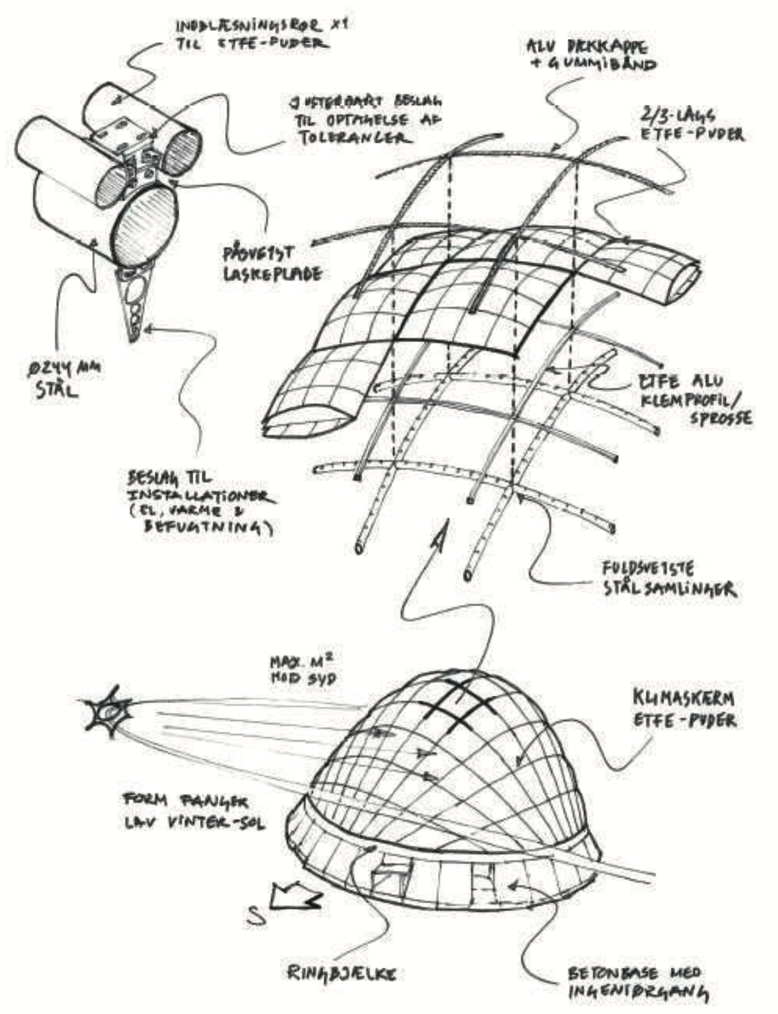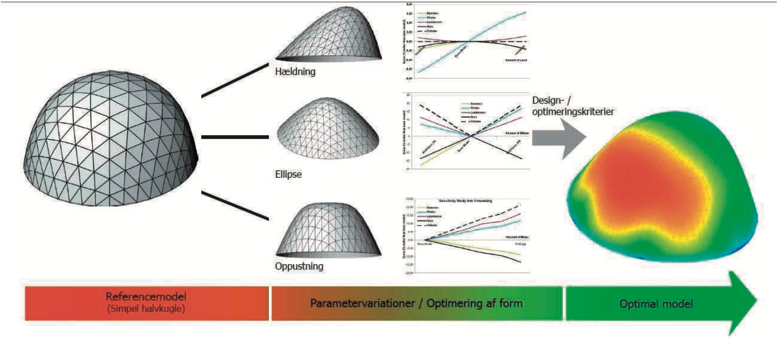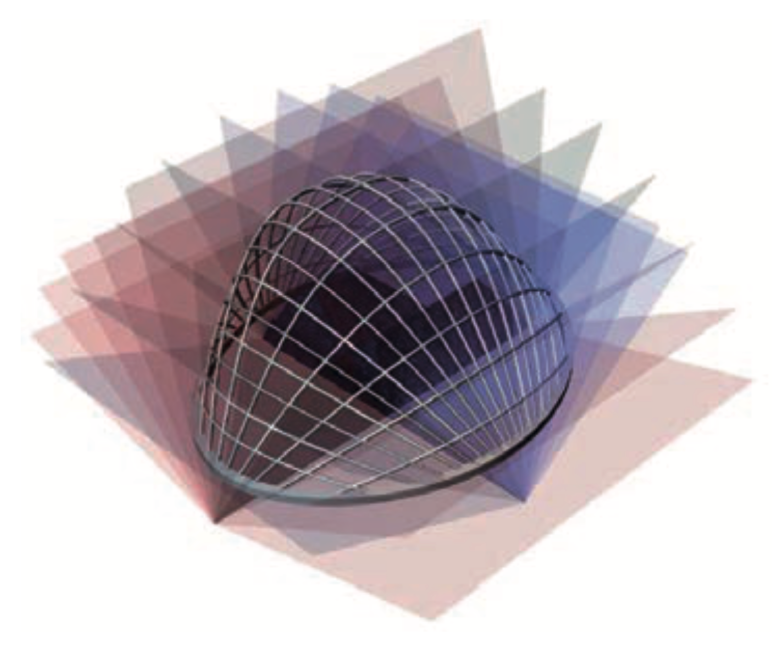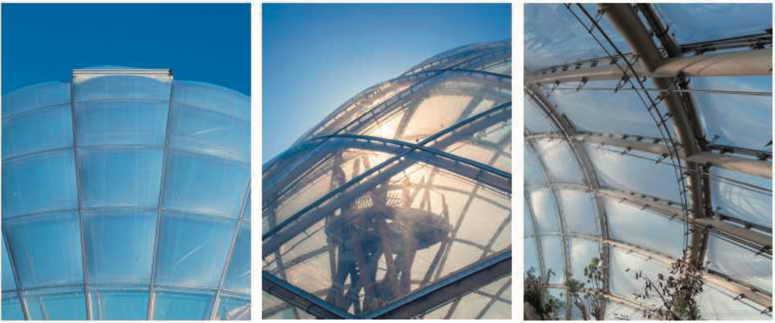Af Konstruktionsingeniør Ulrik Kæseler IABSE Conference - Elegance in Structures, Nara Japan, 2015
Ulrik R. Kzesesler
Structural Engineer
Søren Jensen
Aarhus, Denmark,
[email protected]
SUMMARY: In 2008 it was decided by the University of Aarhus to renovate the existing greenhouse and to
develop the site by combining the renovation of the existing hothouse complex with a new tropical
greenhouse. The competition brief called for a new state-of-the-art tropical hothouse, a visitor
centre and a renovation of the existing building, the goal was to make the entire complex
sustainable.
In the competition we developed an optimal shape for the new tropical green house, driven by the
following design parameters.
The building envelope was optimized, using the following parameters:
- maximize solar radiation during winter,
- minimize solar radiation during summer,
- maximise skylight during the whole year,
- maximise internal volume and headroom and
- minimise the surface and thus heat loss
ETFE cushions was proposed as façade, to maximize the UV radiation and to get a significant better
insulation, than would be obtained if the façade was build, as most greenhouses in Denmark, with
single layer glass. Furthermore ETFE enabled us to generate freeform geometry, because ETFE is
easily shaped to fit complex shapes.
The project designed during 2009-10 and realized ready for opening for the public in 2014.
KEYWORDS: Steel Grid shell, ETFE, Optimization, Parametric design, Grasshopper, Sustainable

1. GENERATING AN OPTIMAL SHAPE
The base shape we started out with was a half sphere, maximum volume, minimal surface. It was chosen to generate as much room for plant and trees with as little heat loss as possible.
To help develop the optimal shape of such a building, a novel approach using subdivision surfaces modelling was used to generate the complex geometry of the envelope
To evaluate each geometry’s performance in terms of a quantitative weighting of the five described parameters, solar studies was the main design engine, giving fast and dynamic calculations and results each time a new shape was generated.
This enabled us to do many variations of the shape, and generate fast results and by comparing these results the optimal shape for the northern climate in Denmark evolved in to the dynamic form leaning north with a large area to the south oriented towards the low winter sun


1.1 Structural Scheme
A series of structural schemes were developed and investigated using the subdivision model and
finite-element software. Some schemes used triangular meshing, others hexagonal and still others
recursive growth algorithms that would mimic the growth of tree trunks.
In the end it was decided upon a scheme with a grid of arches gencrated from intersecting the
envelope shape with two, orthogonal sets of planes in a radial fan. This allow oval steel sctions to
be used for the arches as it provided a larger out-of-plane stiffness while reducing the shading effect.
Round tubular sections was chosen for the arches, the arches span 45 meters and are 18 meters high,
with a diameter of 244 mm the arches are very slender, this is only possible because of the torsional
stiffness of the beams in the transverse arches, bending moments in the arches are in the joints
converted to torsional ‘moments, this contributes with tremendous stiffness to the structure and
ensures a very robust building.
In the final design of the layout many different aspects was taken in account. The design guidelines
and properties of ETFE cushions was incorporated
- Maximum size of 5x5 meters.
- The cushions along the bottom was designed to have similar proportions to ensure an even
distribution of the bulges. - Ensuring that there ponding will not occur if the cushions are deflated.
The access and escape routes was integrated in the design ensuring full accessibility needed to use,
maintain and evacuate the new tropical hothouse.
1.2 Tools
Subdivision was done by scripting in Rhino, developed by Professor Paul Sheppard, the script was running as a plugin to Rhino and by only 8 control points the shape was developed from hemisphere to the shape extending the hill in Botanical Garden, Aarhus Denmark.
The planes defining the steel structure was done as parametric design in Grasshopper. Again this allowed us to do many different studies in to what the best layout of the arches would be.
The Structural calculations was developed to be updated with the various layout developed. The grids generated with the parametric model was linked in to Sofistik where structural calculations and design was performed.
Finally the drawings where gencrated in Revit allowing a fully coordinated BIM-project including mechanical, and electrical equipment.



